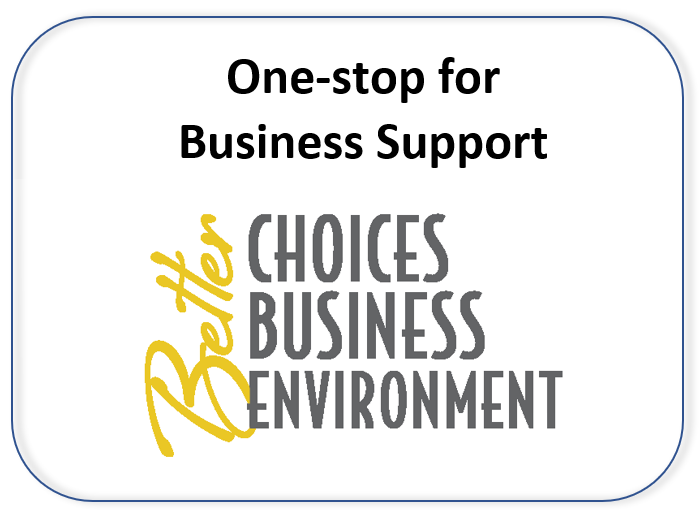Dry cleaners and industrial laundries
The textile care industry, including dry cleaners and industrial laundries, has a variety of environmental requirements with which they must comply. Dry cleaners use solvents that are regulated to protect human health and the environment. Industrial laundries servicing print or shop towels are also regulated due to the solvents in the materials being laundered. Resources to assist with compliance and reduce environmental impacts are provided below.
Compliance assistance
Industrial laundry emissions
Materials laundered by industrial laundries can contain substantial amounts of VOCs from solvents when laundering print or shop towels, however uniforms and rugs or hospitality related materials are likely to have only incidental solvent content, if any. The DNR created a fact sheet for Industrial Laundry Facilities (AM-561) to describe how to estimate emissions and determine whether an air permit may be required.
Dry cleaning compliance calendar
The DNR puts together a compliance calendar to assist Wisconsin dry cleaners with compliance. It provides a way to keep track of documentation and ensure all your business' records can be found in one place.
Information on PERC requirements
EPA has determined that perchloroethylene, (also called tetrachloroethylene, tetrachloroethene, PCE or 'perc') presents an unreasonable risk of injury to health when used for dry cleaning and spot cleaning. This determination is based upon a risk evaluation under the Toxic Substance Control Act (TSCA). Regulations went into effect January 17, 2025 to ban perc, and include requirements for dry cleaners to discontinue the use through phased compliance deadlines which provide time to switch to alternatives. The perc ban specifies a 10-year phase out for use by drycleaners.
Ban of Perc
The rule prohibits the use of perc specifically by type of dry-cleaning machine, including:
- The use of perc in dry cleaning machines purchased or acquired after June 16, 2025 is prohibited.
- The use of perc in third generation dry cleaning machines (dry-to-dry, non-vented machines with refrigerated condensers) is prohibited after December 20, 2027.
- The use of perc in fourth generation dry cleaning machines (dry-to-dry, non-vented machines with both refrigerated condensers and carbon adsorbers as secondary vapor controls) and fifth generation dry cleaning machines (non-vented machines with secondary vapor controls, a monitor inside the machine drum, and an interlocking system to ensure the concentration is below approximately 300 ppm before the loading door can be opened) is prohibited after December 19, 2034. The manufacture, processing and distribution of perc-based dry-cleaning solvents is also prohibited after December 19, 2034. After this date, the manufacture (including import), processing and distribution in commerce of perc for use in dry cleaning and spot cleaning will also be prohibited.
Recordkeeping
If you are currently using perc in dry cleaning or spot cleaning, there are near term regulations for recordkeeping. Maintain ordinary business records that demonstrate compliance with the perc regulations under TSCA (bills-of-lading, invoices, receipts), notices about which solvent is used, permits, certificates and receipts for perc purchases. These records must be retained for five years from the date of the record’s creation.
See EPA’s Compliance Guide: Regulation of PCE for Dry Cleaning Under TSCA for more information. The compliance guide is also available in Spanish and Korean on the Risk Management for Perchloroethylene (PCE) page.
Note that while still using perc, dry cleaners need to continue to comply with all existing requirements.
Additional Information
The Dry Cleaner Environmental Response Fund (DERF) Program was established to help dry cleaners pay the cost of investigating and cleaning up contamination caused by the release of dry-cleaning solvents. They put together a fact sheet on dry cleaning Facility Requirements to Minimize Spills (RR-636).
The EPA requires that all dry cleaners must conduct monthly inspections for perc (PCE) leaks using a halogenated hydrocarbon detector or PCE gas analyzer.
For a short summary of requirements in Korean see Basic Air Pollution Monitoring for Small Dry Cleaners (Korean) (SB-200-A).
Each year dry cleaning shops are required to file a Annual Perc Usage Report (SB-200-D) report by March 1.
Regulatory summaries formerly included in the Compliance Calendar:
- Air Pollution Regulations (SB-200e)
- Hazardous Waste Regulations (SB-200f)
- Pollution Prevention and Sustainability (SB-200g)
- License and Solvent Fees (SB-200h)
Recycling
Plastic bags used to cover dry cleaned items may be recycled. Learn more on Reducing, reusing and recycling plastic bags and wrap. Maybe you have space to provide a collection bin.
If not already doing so, consider recycling common office equipment that may be found in your shop. Learn about Business and workplace recycling.
General compliance assistance
For more resources to help your dry cleaning establishment comply with environmental regulations and improve your environmental footprint, please visit the following website:
- EPA's Dry Cleaning Sector
Best management practices
Helpful tips to enhance the bottom line and save money
If you're looking to save money and resources in a particular area, check out the below guides and initiatives.
- Managing Energy Costs in Dry Cleaners
- Safer Detergents Stewardship Initiative offers recognition for your business if you use a safer detergent in washing clothes.
Consider utilizing or selling green resources
With the number of consumers demanding green products, services and industries increasing each year, businesses incorporating sustainability into their practices are finding an increased customer base and enhanced bottom line through the formulation of a competitive advantage. Providing reusable or biodegradable garment bags and reusing or recycling hangers are just a couple of the many things you can do to green your business.
Other resources
Solvent Alternatives
Minnesota Technical Assistance Program reviewed alternative cleaning technologies.
The Toxics Use Reduction Institute (TURI) at University of Massachusetts has evaluated numerous solvents and compared aspects, both cleaning ability and environmental impacts. They also have a report, Assessment of Alternatives to Perchloroethylene for the Dry Cleaning Industry, with detailed information on perc alternatives.
The Kansas Small Business Environmental Assistance Program conducted a wet cleaning case study.
Good Housekeeping conducted independent testing on various dry cleaning solvent methods comparing the cleaning capabilities of each. Their results can be found at the Good Housekeeping website.
Additional regulatory resources
The National Small Business Environmental Assistance Program (NSBEAP) has a page dedicated to dry cleaner assistance, including alternatives to perc.
The U.S. Environmental Protection Agency (U.S. EPA) provides information on spot cleaning alternatives to perc on their Dry-Cleaning Sector Regulatory Update fact sheet. They have also conducted a Risk Evaluation for Perchloroethylene.
Occupational Safety and Health Administration - dry cleaning information.
WisCon is a free, onsite safety and health consultation program for small businesses offered through the Wisconsin State Laboratory of Hygiene.
Business support
Receive business consulting and education services from your local Small Business Development Center (SBDC).
The State Coalition for Remediation of Drycleaners (Wisconsin is a member) offers information about dry cleaning and site cleanup on its website.
Financial resources
For more information on loans, grants and other programs designed to help small businesses, see the financial resources pages.
| Additional resources |
|---|

